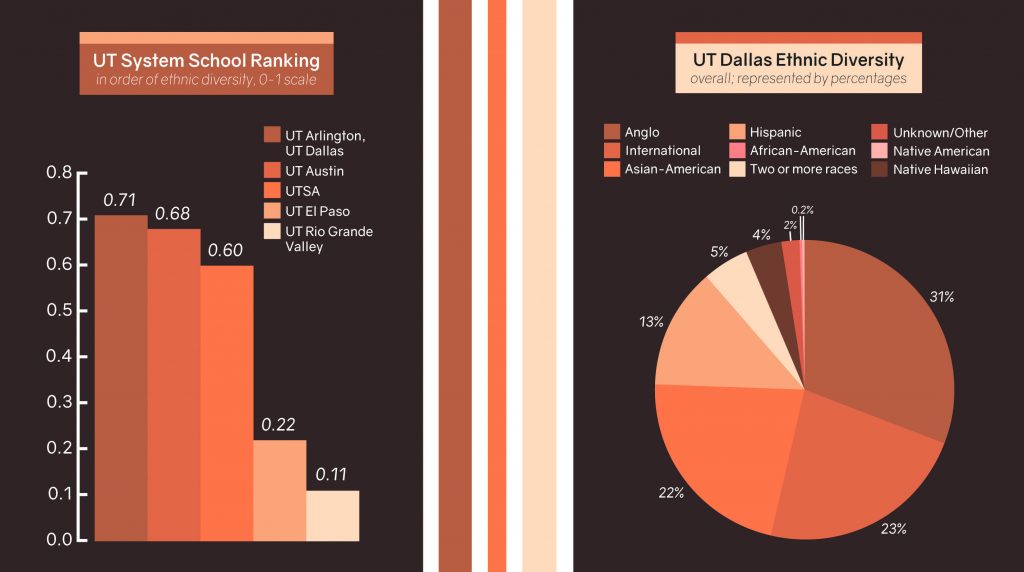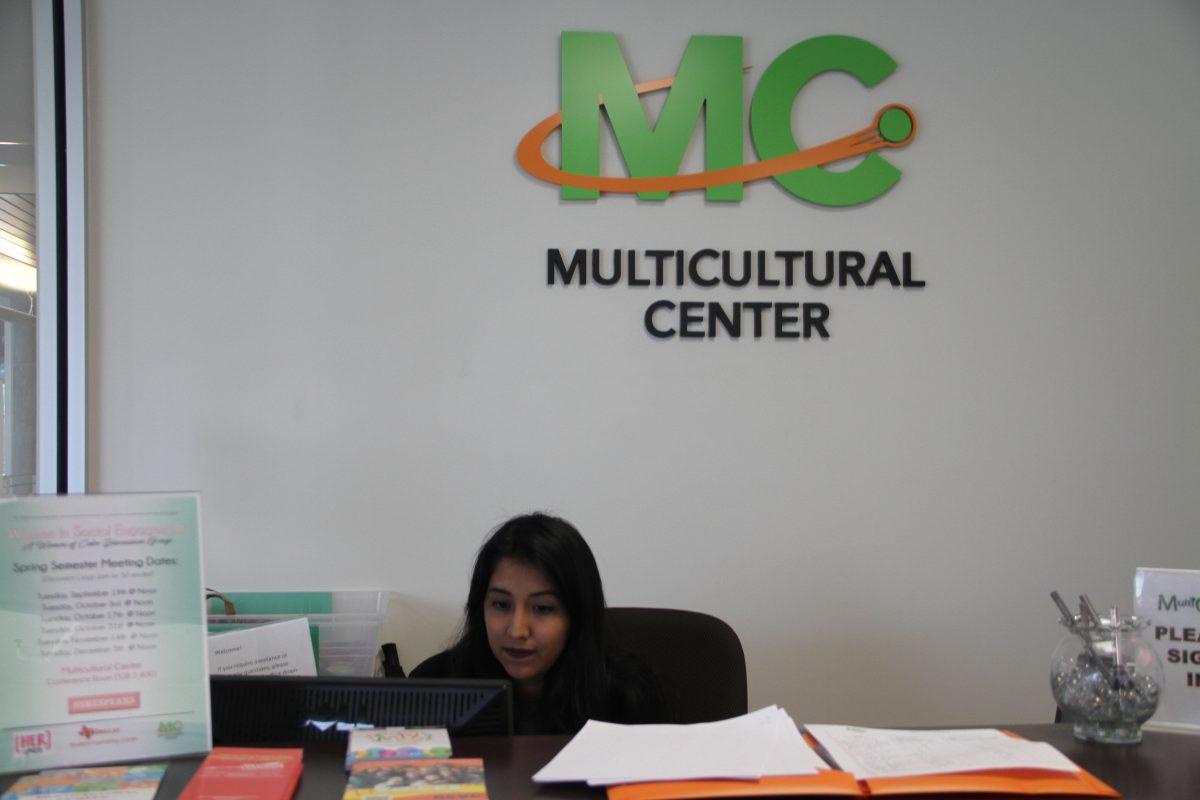UTD recently ranked fifth in a report of different ethnically-diverse campuses in the United States.
The list of rankings, released in the 2018 U.S. News & World Report on Sept.12, placed UTD fifth nationwide and second in the state for ethnic diversity. For staff members of offices such as the Multicultural Center and the Office of Diversity and Department of Community Engagement, the ranking came as an important achievement.
Arthur Gregg, director of UTD’s Multicultural Center and assistant vice president of Multicultural Affairs, worked at the university since 1998. In 2003, Gregg founded the center along with other workers from the then-named Multicultural Services.
“I was just elated that we are seen in this place with these rankings,” Gregg said. “It just shows that UTD is on the map and that people recognize what we do here. I was excited because it will open us up to continue to diversify our campus. People will look at us for our academics as well as students’ comfort in coming here.”
The report classified colleges based on each institution’s 2016-2017 data for the total proportion of minority students, excluding international students.
On an ethnic diversity index of 0-1, UTD scored 0.71 on the list for national universities, placing 10 spots behind the highest score of 0.75, with several schools tying for each place. UTD tied with UT Arlington and nine other schools for fifth place, and ranks higher than other school in the UT System.
Gregg said he believes UTD was able to surpass most public universities in Texas because of its relatively newer establishment.

“We’re young and we’re not tied to a history of traditions of oppression,” he said. “And our beginnings come totally different from a lot of other institutions. So the ability to be young and innovative really connects to us being so diverse. The fact that we’re growing in many ways — there’s something about being under 50. That we’re growing with the world. We’re setting the standard.”
Another factor Gregg attributed to the university’s diversity was its collaboration among different offices. He works closely with other departments on campus, including the Office of Diversity Initiatives, Department of Community Engagement and the Galerstein Gender Center.
Raul Hinojosa, director of the Department of Community Engagement since 2008, worked on developing diversity outreach programs and partnerships at UTD.
“To me, (the ranking) means a lot because it means that our students are coming here and learning from different backgrounds and different life experiences, and that’s such an important trait to graduate with,” Hinojosa said. “Industry has shown us that at the end of the day, students need to be competitive in a global workforce and those experiences of students — that’s how they become competitive.”
Hinojosa’s work at the department aims to provide programs increasing college access to minority populations. These programs, such as the Minority Scholars’ Symposium and the Urban STEM Summer Camp, are focused on under-represented groups of middle school and high school students.
“Sometimes it’s been challenging; middle school kids that we work with aren’t graduating for five or six years, so we might not see the impact of a student that we work with immediately,” Hinojosa said. “It’s the kind of work that’s long-term and sometimes can be frustrating because you want short-term wins. It’s cool to see recognition like this one to show that our effort is having an impact, but also as an institution, we’re making progress.”
Although they were not included in the diversity index as members of ethnic groups, international students at UTD comprise 4 percent of undergraduate students and 49 percent of graduate students.
Marketing sophomore Sophia Nikhar started her first year at UTD this semester after transferring from India.
“Everybody’s so welcoming — it’s been a great experience,” Nikhar said. “Every day when I walk to class there are so many people from different backgrounds, different cultures, different places. And it’s really great that you can see so much diversity in one place.”
With over 30 organizations catering to different ethnicities and cultures, students can often find their own community within UTD. Finance junior Erik Ye, president of the Chinese Student Association, said he was able to form a stronger connection with his culture as a member of the organization.
“I love the diversity,” Ye said. “Being part of CSA got me more involved with what it’s like to speak the actual language, eat moon cakes and celebrate culture. Since I visit China only every three years, it helps me connect with the culture and feel like a part of it … And because there are hundreds of Chinese students at UTD, it’s easy to have everyone come out and celebrate.”
Although the university has progressed since the establishment of its various diversity programs, Gregg said he believes there are still areas for improvement, especially for under-represented groups.
“I think we could do a better job at recruiting and attracting African American and Hispanic students,” Gregg said. “Their percentages are fairly low when you look at the demographics of the state. But I think it’s going to be a natural thing to grow in all the other areas — what we’re going to have to do is continue to be innovative and supportive.”
Hinojosa said that UTD should continue to focus on under-represented groups in order to further increase diversity by developing outreach programs that the university already has in place.
“We know that we have a lot of work to do to keep up the diversity at our institution; we can’t rest on our laurels,” Hinojosa said. “We need to make sure students from vulnerable communities are graduating from high school and have the resources they need to come to the university. Our work needs to keep going, but it’s nice to see a pay off at the end.”

















